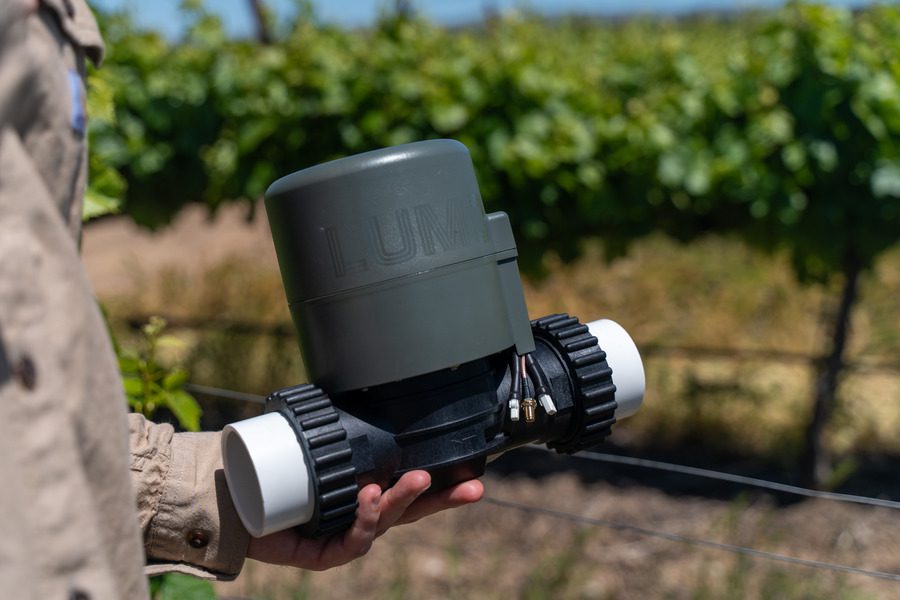How Smart Valves Resolve the Precision Irrigation Paradox

Since I started working at Lumo, I’ve been intrigued by a paradox that lies at the heart of precision irrigation in agriculture.
On one hand, growers understand that irrigation is one of the most important tools they have at their disposal for increasing crop quality and yield. They know it’s absolutely crucial to put on the right volumes at the right times.
And yet, many growers don’t actually know exactly how much water they’re applying. They lack real-time visibility and volume-based control that make precision irrigation possible.
How could that possibly be?
Two reasons: operational difficulty and cost.
Most growers don’t know the precise volumes of water they’re applying to their crops, even though they know just how important it is to get those volumes right, because, at least before smart valves were invented, it was both too hard and too expensive to be exact.
Let’s take the operational piece first.
When you’re relying on an irrigator to open and close valves by hand, it’s extremely difficult to be precise. An irrigator can only work for so many hours. They can easily get caught in traffic, or get caught up in whatever they’re doing and lose track of time. There are a whole bunch of different reasons why water might run an hour or two longer than intended.
Even if you know intellectually that precise volumes are important, it simply doesn’t matter if your operations only allow you to deliver rough durations anyway. This has been the reality for so long that many growers have come to believe that being more precise is impossible. There’s no use trying. The juice isn’t worth the squeeze.
Which leads us to the second piece–cost.
Because of the importance of irrigation, there have been countless attempts to automate the turning of valves and to cobble together solutions for tracking volumes.
But in addition to adding operational complexity, these solutions have also been cost prohibitive.
The price point matters.
If a solution is too expensive, it can easily offset any gains in quality or yield, and your return goes out the window. Add in a bit of downtime at the wrong time, and there’s no wonder why so many growers end up going back to irrigating manually.
Smart valves deliver precision irrigation and operational simplicity at a price that makes sense.
With internet-connected smart valves, growers gain a level of operational control that they’ve never had before. They can turn their valves with a tap on their smartphone from wherever they are. They can set up irrigation schedules and completely automate the process.
They’re no longer bound by the number of working hours in their irrigator’s day, or by how long the drive takes to get to the ranch. They can avoid peak electricity rates and irrigate at night. And with the flow meter that comes built into each valve, they can finally irrigate based on volume.
Even better, those volumes automatically get logged and securely stored, so growers know exactly how much water was applied to each block without doing any manual reconciliation work.
No clipboards. No spreadsheets. No entering start and stop times anywhere.
Delivering precision irrigation is simply way, way easier with smart valves. As is verifying those volumes after that fact. So much less time. So much less effort.
And to top it off, smart valves are much less expensive than the alternatives. Piecing together a similar solution with solenoid valves, sensors, telemetry units and software costs 3-5 times more.
Until now, growers have simply not been set up for precision irrigation success.
To date, growers have done their best with what they had.
But they’ve faced binding operational constraints and been given inadequate tools. Because they haven’t been able to deliver precise volumes, it made little sense to put in the effort to track their water usage more closely.
Smart valves shift the paradigm.
They make delivering precise volumes easy, they make tracking those volumes automatic, and they do both at a price point that allows the potential gains in crop quality and yield to fall directly to the grower’s bottom line.
Smart valves finally make it possible and profitable to be as precise as growers have long wished they could be.
To learn more about how smart valves can help you achieve precision irrigation, request a demo here or contact us at [email protected]